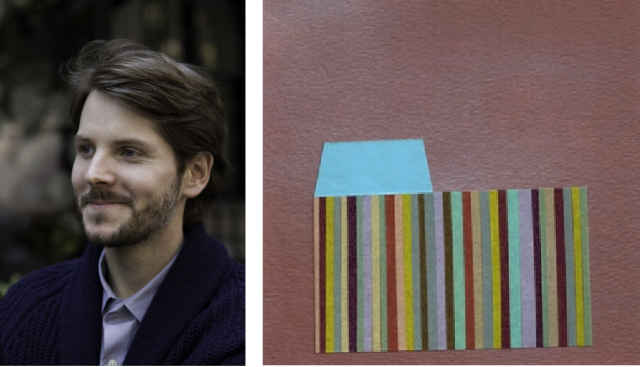“I am also interested in exploring the way that two people can really volley words back and forth in a playful manner — I think of the rhythm of an intense ping pong match — and develop a certain suspense, because it is a lot like a game.”

NN (Tammy Journal, 2016)
Your chapbook is titled NN, and one character is named NN. What does NN mean?
Nicéphore Niépce, one of the inventors of photography, who is credited with taking the first photograph, which was a view out his window.
How did you develop your love of photography?
When I was about 12 years old, my father gave me a camera for my birthday. I immediately took to it, and wanted to learn everything I could about photography and black-and-white printing, so I took every photography class I could, and spent as much time in darkrooms as I could. And then, when darkroom photography began to be overtaken by digital photography, I kept going, and in particular became interested in combining digital technology with 19th-century techniques, such as the cyanotype.
The dialogue-conversation tone between characters appears several times in your chapbook. How have conversations with others inspired your poems?
Most often, I overhear a snippet of language, or a strange response to a question, that I find compelling, and want to include it in a poem. But I am also interested in exploring the way that two people can really volley words back and forth in a playful manner — I think of the rhythm of an intense ping pong match — and develop a certain suspense, because it is a lot like a game.
The second character, I, dialogues with NN about the light, world, and other personal matters. In your poem “Can we talk a little about your vocabulary,” NN’s somber philosophy appears to correct I’s literal explanations. Could you tell us how you created these characters?
NN is Nicéphore Niépce, who was a real figure, and I is the first person pronoun: it is me, or someone who knows a lot about me. When I was writing these poems, I was doing a lot of research on Niépce, and I had certain unanswered questions about his life, and the process he was working on in the 1820s, and I finally decided, why don’t I just ask him? And then those imaginary dialogues, which of course included real biographical information, grew and changed. I began to view them as another way to provide a range of voices in the book, or to complicate the notion of my voice and Niépce’s voice. Because, ultimately, in writing about a historical figure, I was not solely interested in the facts of his life, but in the way those facts have been represented, and how I was choosing to represent them, too.
Is the cousin in your poems based on a real family member?
It is, Alexandre Dubard de Curley, to whom Niépce wrote letters.
What do you like the most about working with biographies?
I like exploring someone else’s life and learning more about what drove them, what their motivation was to achieve what they achieved. But I am also fascinated by their quotidian routine, what they had for dinner, how they talk about the weather. All of that provides a tangible contact with the past in a way that little else can, save certain objects. I am also interested in the use of language over time, and discovering a person’s particular idiom. You can glean some insight into who they were by the words they used.
Have your poems based on biographical sources ever been criticized by historians?
Not that I am aware of, but that seems likely to happen.
Do you relate to NN or I more, or perhaps one of your historic figures?
As I mentioned earlier, I is me, so I have no choice there, but I do relate a lot to Niépce, too. I find his dedication to his work, and his unflinching belief in it despite his many setbacks, inspiring.
*
Andrew Seguin is a poet and photographer who was born in Pittsburgh in 1981. He is the author of the chapbooks Black Anecdote and NN, and the full-length collection, The Room In Which I Work, forthcoming from Omnidawn in 2017.
*